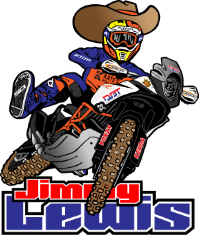
Jimmy,
I hear all the time that you say riding slow is better in the sand but everyone else teaching sand riding techniques says you need speed. I can’t ride slow in the sand and I need speed so I don’t get stuck. Also, how do you keep the front end light going slow?
Can you explain?
Jim
Jim,
First, you obviously have never seen me ride because I haul ass in the sand, so how could I contradict myself so much? Second, you haven’t been to the class, because I demonstrate riding slow in the sand every time. In my very idealistic and simple way of teaching, there is one core rule and that is to slow down. If you can’t do it slow, you will never be able to do it fast. You can lumber along with luck, momentum and waste tons of energy trying to go fast, but I will promise you it will end badly. Slow down to speed up. I do.

To answer your second question. How do you keep the front end light going slow? Here is my answer. You may have issues with the front for two reasons. First, is you are likely out of balance. Second, is that you are not aware of the traction.
Since you are out of balance, you are in effect steering the bike in the direction your weight is falling. Get in balance and the bike magically wants to go straight. Usually, most out of balance riders try and correct the balance through the handlebars, which is the worst way to do it. Using the handlebars should only be used as a last resort. The result of using the handlebars and getting back is, you end up with the pendulum effect. Getting back puts your body weight towards the back of the bike. And if you are over the back of the bike, you guessed it; you wanted the front wheel light. Well, now the pendulum is swinging farther with more inertia. Finally, you chop the throttle (and that is when the bike really accelerates in the sand), transfer all that weight forward, and also accelerate; to whichever side your weight is falling and boom! You hit the ground.
That was a detailed explanation of how “getting over the back and gassing it” really works.

To explain the proper technique, let me begin with this. In a nutshell steer with your feet, use the throttle to get traction, and correct the balance. If you are in balance you do not need to use your body weight to make the front end light. If you want the front end light and the bike balanced, use the throttle by giving it a sharp burst of power. The sharp burst of power will transfer weight to the back wheel, stiffen the suspension, and lighten the front end. Which is what you wanted to do by sitting or getting back on the bike. However, now you don’t have the unbalanced and uneven weight distribution. Instead, you have a balanced weight distribution and a more stable bike.
The reason we teach people to ride slowly is that you can’t ride slow and out of balance at the same time, you will fall over. Riding slower forces you to be in balance.
Now to answer your concern about getting stuck in the sand. With proper throttle control and an understanding of traction, you will likely not get stuck. Getting stuck is most likely related to being out of balance. Going slow and keeping the balance will allow the rider to anticipate the bike beginning to turn. Allowing you to feel the beginnings of getting unbalanced (the same thing, really). This, in turn, will allow you to react with either a correction of balance or a sharp burst of power. Or both.
The motorcycle will really do the acceleration when the wheels speed is reduced, or just after the burst of power.
Starting in balance and staying in balance are the keys to sand riding. Unlike other schools, we will never teach you to “go faster” or “keep speed.” Those things come with time, practice, and being comfortable with your ability level. But the most important thing is that these balance and slow riding techniques need to be mastered on hard ground first. Because the out of balance part is just amplified by the sand and the lesser amount of traction does nothing to help.Most schools don’t teach this way for a couple of reasons. It takes a very skilled rider to ride really slow in the sand and demonstrate this technique properly (Maybe one-handed, ask your other instructor to do it as Jimmy does.) We’ll bet you’ll soon start seeing other schools teach our method as they send more and more of their instructors to our classes to see how we teach and explain it. Because it really works! And we are not sending students away in ambulances because they didn’t “go fast enough”.







